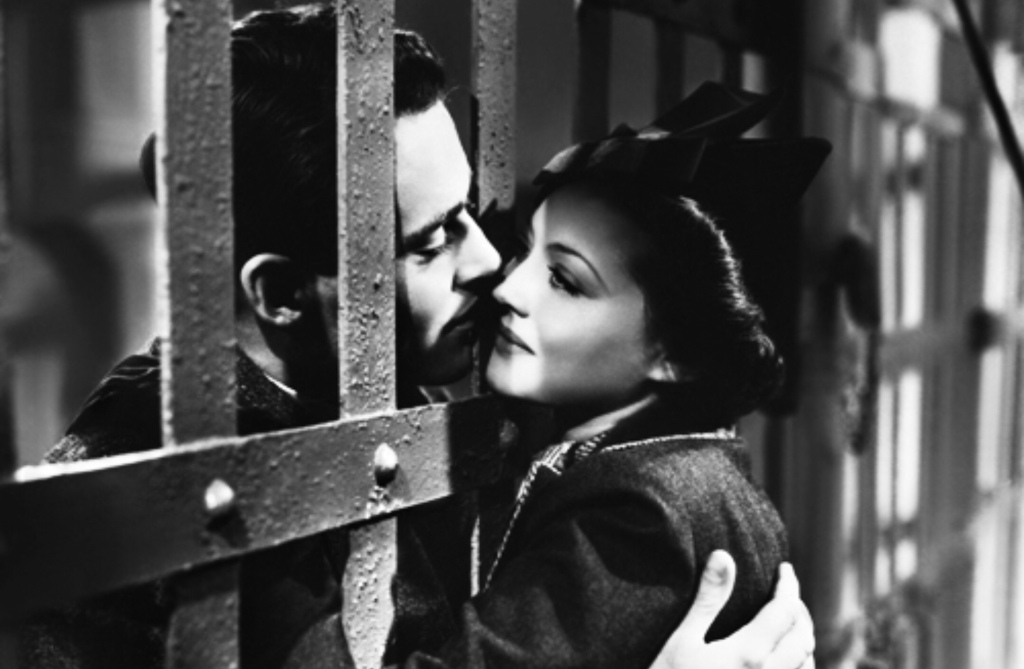
We’ve all seen the classics, right? Those old school Hollywood films that feature the stars of yesteryear, appear in every Top 100 list, and shaped filmmaking throughout the generations. A growing passion for cinema often includes an early, formative viewing of Citizen Kane, or relishing in the magic of Casablanca, Rear Window and 12 Angry Men. But the Hollywood Golden Age was more than just a few iconic masterpieces; it was decades worth of studio productions, churned out by the magic factory with the finest creative minds of the era at the helm.
For all its shortcomings, the studio system gave us some of the finest films ever made, and dazzling stars to light up the screen. It’s a tragedy that so many wonderful films released prior to 1960 remain so little seen or known today. They may take some time and dedication to discover, but you’ll often find it was more than worth it once you do. Here are ten of the best Hollywood classics you may not have seen.
1. Captain Blood (1935)
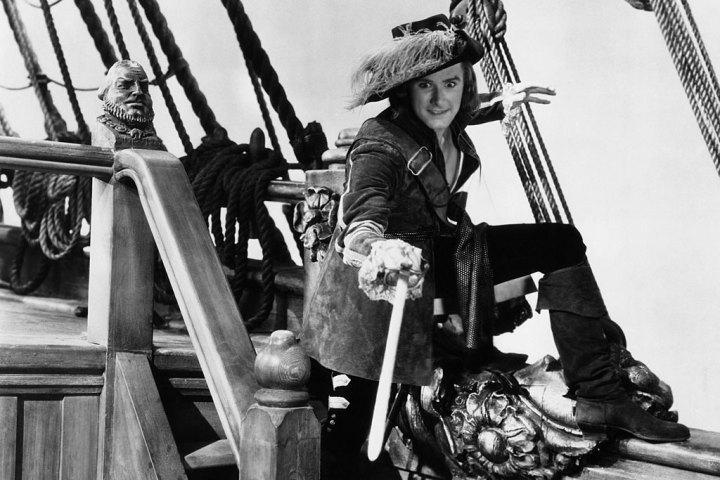
The grandfather of all great pirate films, and one of the first true action blockbusters of its age. With Captain Blood, Michael Curtiz laid the groundwork for the first era of big budget action spectacles for sound cinema. In doing so, he claimed his place as the top director at Warner Bros. in the 30s, and crafted a genre formula so entertaining that Hollywood has rarely strayed too far from its path in the decades since.
There’s dashing heroes, dastardly villains, warm romance and comic relief, and a massive, explosive finale, accompanied by a rousing Korngold score. Everything that’s become synonymous with the genre can be found here, all packaged in the grandest of Golden Age productions. Curtiz does such a tremendous job bringing it all together, with stylish design, magnificent scope and excitement never waning for second. And in the process, he also helped to create two of the silver screen’s greatest ever legends.
Errol Flynn and Olivia de Havilland were both unknowns when Warner Bros took a risk on them for their largest production, a risk that paid off handsomely. Flynn just jumps off the screen, barking orders with such joyous enthusiasm that you’ll wish you were a part of his crew. In many ways, in a Hays Code Hollywood, Captain Peter Blood is one of the earliest screen anti-heroes, pillaging loot and causing mayhem as he tries to convince himself he’s fighting tyranny. And De Havilland, so sweet and genial, is the perfect counterbalance to Flynn’s roguish charm. She brings emotion into the story while still challenging Blood, forcing him to question what he is really fighting for. It’s their burgeoning romance that allows you into the story on an emotional level. Equally fresh faced and enthusiastic, the chemistry between them is undeniable. There’s something so endearing about them together; the kind of couple you can’t help but root for.
It’s clear as day to see why they were paired as co-stars again and again over the years. The iconic screen couple would share the billing in eight films throughout their careers, most famously in Curtiz’s masterful The Adventures of Robin Hood, and it all began with Captain Blood. For as good a job as Curtiz did crafting this swashbuckling adventure, what elevates it to that top tier is the undeniable appeal and charisma of its two lead stars. Never has being a pirate seemed more gallant, more daring and more romantic.
2. Dead End (1937)
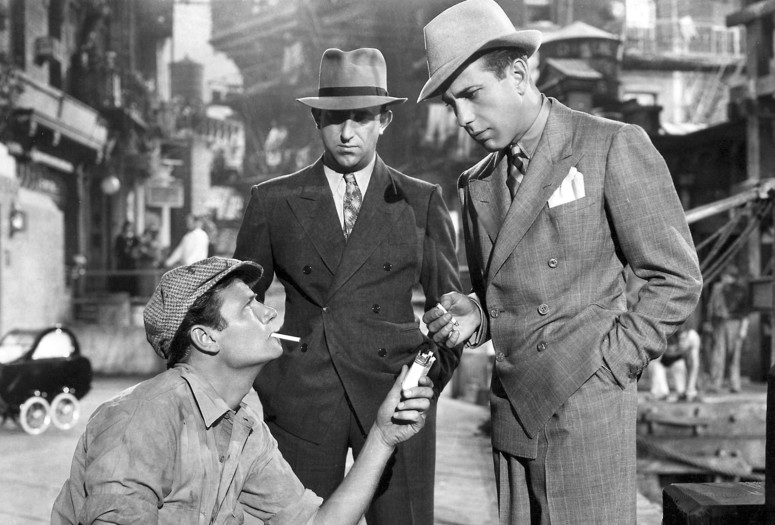
For a film from the 1930s, Dead End is particularly hard-hitting. Sure, it’s got its melodramatic qualities, as well moments of lighter comedy and tender romance, but that was part and parcel of most studio productions from that era. Beneath that exterior though, there’s so much rich social commentary and impressive filmmaking. It’s the honest portrayal of poverty and class struggle that makes this social drama so effective, and sets it apart from its contemporaries.
Opening on a single take shot of a bustling New York street, Wyler dives right in the deep end with his social commentary. The camera weaves over every corner of this contained world, revealing all the little details and interconnected relationships. The spectacular single set (and it really is spectacular) perfectly contrasts the filthy, lowdown world of the working class with their sleek, highbrow, and very secluded upper-class neighbours. The film has complete sympathy with the struggles of its main characters, highlighting inequality and ignorance wherever it can be found. Gregg Toland’s wonderful cinematography frames everything so effectively, capturing striking images and tiny details with equal clarity. It’s through the images as much as the dialogue that Wyler reveals themes and character, making the world feel lived-in and alive despite its stagey setting.
Wyler paints a bleak picture of life at the bottom of the food chain. A never-ending, inescapable cycle of hardship and anguish, with nothing to comfort you but hope and togetherness. It’s sentiments that must’ve been felt all across America during the Depression years, but for a Hollywood director to bring it to the big screen unsanitised is very brave. He shows the strife that the young generation battle through, played mostly by the Dead End Kids in their film debut. They were a group of young actors from the late 30s, most famous for starring in Michael Curtiz’s Angels with Dirty Faces, and had played the same characters in the original Broadway production of Dead End two years prior. They bring camaraderie and street smarts, but also early signs of resignation to their status, already aware of the social barriers that will restrict them in life. In contrast, the adults show the bitter end of the road. Humphrey Bogart in particular embodies this sentiment – a truly nasty piece of work struggling to come to terms with where his decisions have left him.
Every character rails against the system in some way, and the film is socially conscious enough not to pretend it’ll all be okay in the end. Dreams and morals must be sacrificed in the name of simply getting by, with the story even reducing its characters to literally begging those above them for simple kindness and sympathy. There’s an inevitability to it all, and your heart just goes out to the unfortunate souls trapped in this gutter. Wyler’s socialist tendencies are blended throughout many of his best works, but it’s probably never been more pointed and scathing than here. It’s a surprisingly poignant effort from one of the era’s greatest directors.
3. The Tarnished Angels (1957)
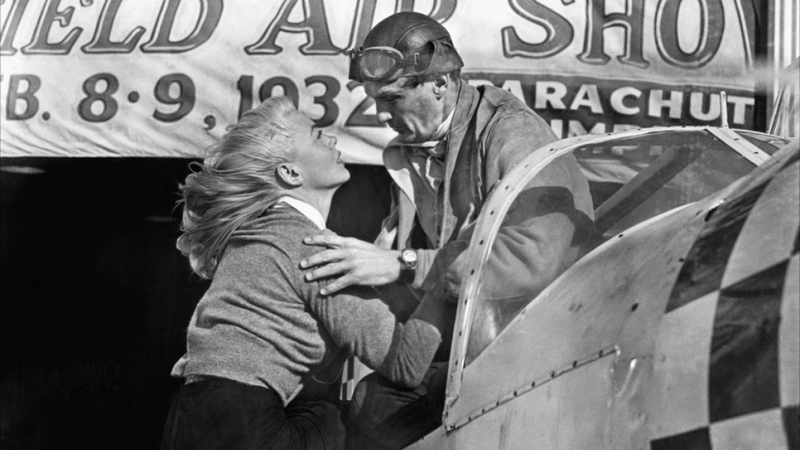
Douglas Sirk is a director known for a certain type of film: deeply melodramatic dramas, often bursting with colour, stylish design and warm performances. So it’s quite surprising to find out that The Tarnished Angels is the film he allegedly considered to be his finest work. It’s a stark contrast to a typical Sirk film, taking to the sky to show the high-octane, low-morale, and all-round dangerous world of aviation and air-shows during the Great Depression. Presented in shadowy black and white, it follows hard, cynical people as they survive in an unforgiving world – a far cry from the cosy suburbs and lavish mansions seen in the likes of All That Heaven Allows and Written on the Wind. Sirk’s films were certainly not all warm and comforting, but this one more than any other gives you an inescapable feeling of unease. As he tightens the hopelessness that grips these characters lives, you increasingly feel that there just can’t be a happy ending to what you’re watching.
Rock Hudson, Dorothy Malone and Robert Stack are all excellent, each one so flawed and completely compelling. All three starred in Sirk’s wonderful Written on the Wind, released the previous year, and their return is just as impressive. Hudson’s doing some of his best work, for once playing a guy who isn’t completely wholesome and well-intentioned. He begins as his usual honourable persona, but there’s always selfishness and egotism just beneath the surface. When he finally does get exactly what he wants, it’s in the worst way imaginable, and his struggles to come to terms with it are genuinely heartfelt. It’s some of the finest acting of Hudson’s career, under a director who always knew how best to use his particular talents.
Similarly, Dorothy Malone shows that the Oscar winning turn in Written on the Wind was no fluke. She can play a down-to-earth, put-upon mother, struggling with everything life throws at her, just as effortlessly as she can be a cold and manipulative brat. There are so many dimensions to her character, and the chemistry she shares with Hudson is palpable. Stack once again plays a feverish sort of man, but he does it so well, and his character arc feels particularly impactful come the end.
Sirk’s switch away from vibrant colour palettes to stark black and white imagery really works for the story. It makes it all feel moodier, bleaker, seedier, even during the simplest of conversations. The noir-ish lighting and framing make the stars look so good every time, especially Hudson and Malone. In a filmography of colour and romance, this black-and-white sheep of the group is a refreshing change of pace.
4. Street Angel (1928)
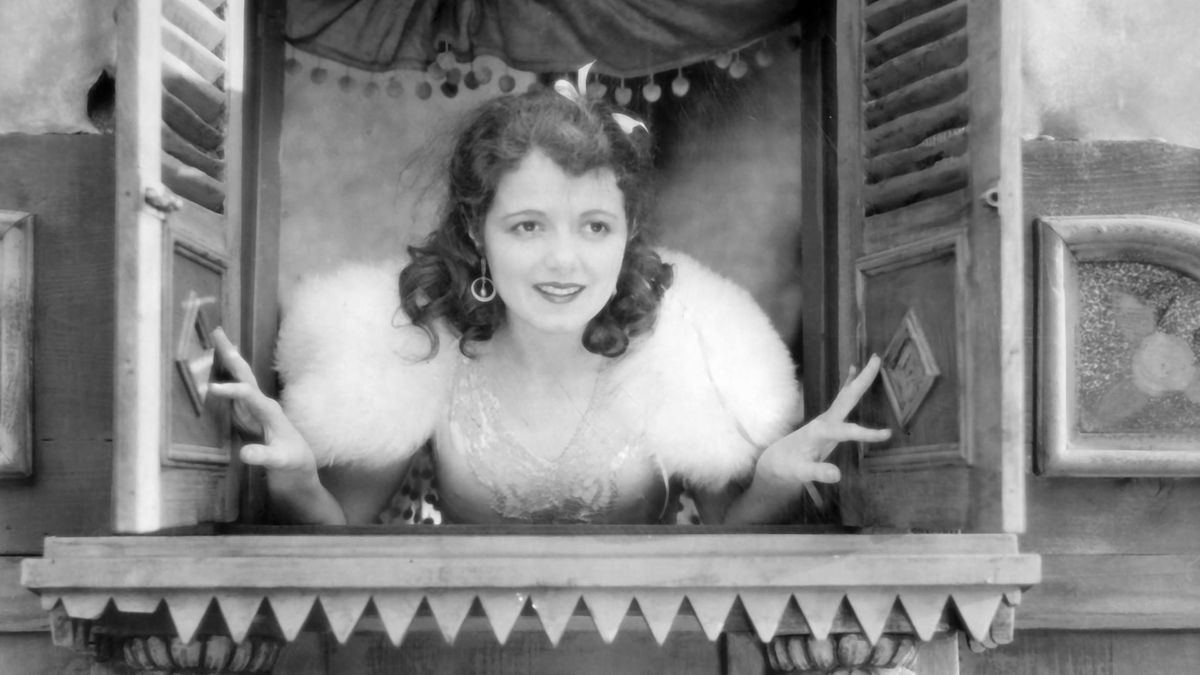
Things were a little different at the very first Academy Awards. As well as two awards for Best Picture (‘Outstanding’ and ‘Unique and Artistic’) and two for Best Director (‘Dramatic’ and ‘Comedy’), the Acting award recognised multiple films for each winner. In Janet Gaynor’s case, she won the inaugural Best Actress award for three performances. And while she’s sublime in both F.W. Murnau’s Sunrise: A Song of Two Humans and Frank Borzage’s 7th Heaven, it’s Borzage’s Street Angel that’s the pick of the trio. Performance-wise, it towers above the rest and, in spite of Gaynor’s tiny frame, stands tall as one of the greatest silent performances there is.
It’s so easy to be pulled into great silent film performances. They rely so much on the ability of the actors to emote and use their bodies to maximum effect. Gaynor covers just about every emotion imaginable – she has the sensitive eyes and melancholy expressions to match the tone of her characters’ plight, but enough moxie and resolve to stand out as a fiery spirit worth rooting for. It’s her patience on screen that really makes it all work, her willingness to let her feelings slowly seep out in the most delicate, natural way. In a landscape of large sets and tall actors, Gaynor’s huge eyes and petite frame act like magnets, drawing and keeping our eyes on her. With just her facial expressions and subtle movement she is able to chart the entire development of this character, complete with charm, tenderness and heartbreak.
Honestly, the rest of the film being brilliant is just an added bonus. This has some of the most stunning shots captured during in Hollywood’s silent age. Borzage utilises the enormous sets so impressively – the world feels massive, like it’s engulfing the tiny characters in a pit of despair. The endless staircases are maze-like confusing, in contrast to the brief moments of freedom, sunshine and happiness outside of the city. Impeccable framing and use of shadows make for some dazzling moments of cinematography, and it all moves along at a surprisingly thrilling pace for a romantic drama. It’s not a complicated story by any means, but nearly every moment is rich with drama. Just as Gaynor’s patience deserved plaudits, Borzage also deserves immense credit for holding on shots, to showcase the talent of his star. A truly moving story of love, secrets and redemption, and one of the best female performances put to film.
5. Sudden Fear (1952)
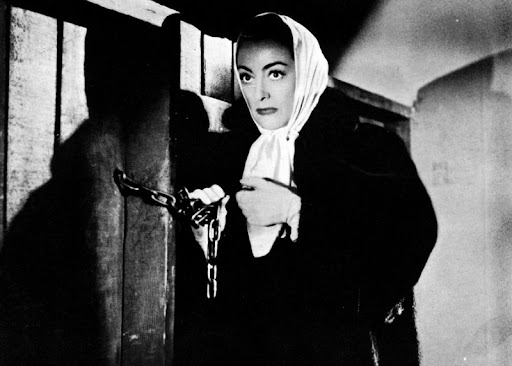
You can definitely make a case for Joan Crawford being the queen of film noir. Mostly cast as a snarky bombshell in her early years at MGM, from the mid-1940s onwards she found her calling as the leading lady in numerous crime thrillers and dark melodramas. It allowed her to utilize her distinct look – those arched eyebrows; those steely eyes – and exercise her sharp tongue that was so perfect for the genre. Michael Curtiz’s Mildred Pierce may be Crawford’s most famous performance, but David Miller’s Sudden Fear is every bit as gripping. It’s a thriller that’s simple enough in its plot, but so effective in its execution. Starting off slowly, it shows a seemingly sweet romance bloom between Crawford and Jack Palance, with only small hints at a more dubious motive. One bombshell reveal later, and the film is set up for a relentless descent into pure noir thrills, wrought with suspense and tension at every turn.
As always, Crawford is terrific – much more sympathetic and vulnerable this time, but still with a gritty determination and fighting spirit. The film doesn’t overly complicate itself, always maintaining a focus on her, what she is learning and what she plans to do. She charts a journey from timid and naïve to resilient and resolute, shifting along a spectrum of emotions very convincingly. The twists and reveals are all extremely impactful, and Crawford always manages to make you emapthise with her predicament. She’s complemented by two other fantastic performances: Palance brings the right blend of friendly charm and calculated coldness to match his shady lover character, while Gloria Grahame absolutely kills it as the deceitful femme fatale – few play that role quite as well as she did. Honestly, a case could be made for Grahame herself being the Queen of Noir, so having these two women face off in a film is a treat for any fan of the genre.
The story delves into the darker sides of the human condition – how far someone is really willing to sink to get what they want, or to fight back and never give in. The finale is a masterclass of noir imagery, with the empty city streets and huge shadows conferring a real expressionist feel. The film crescendos beautifully, ratcheting up the stakes and tension as it builds and builds towards its thrilling conclusion. It gets its hooks in early on and doesn’t let up for a second – truly great stuff.